The Small Arms Factory at
Lithgow opened on 1 June 12 under the Defence Act 1903-1911, which enabled the Commonwealth Government to "establish and maintain arms and ammunition factories" and authorized "the employment of persons in a civil capacity for any purpose in connection with the Defence Force”. The Department of Defence was made responsible, under the Minister, for the administration of the Factory.

1912 Small Arms Factory Lithgow
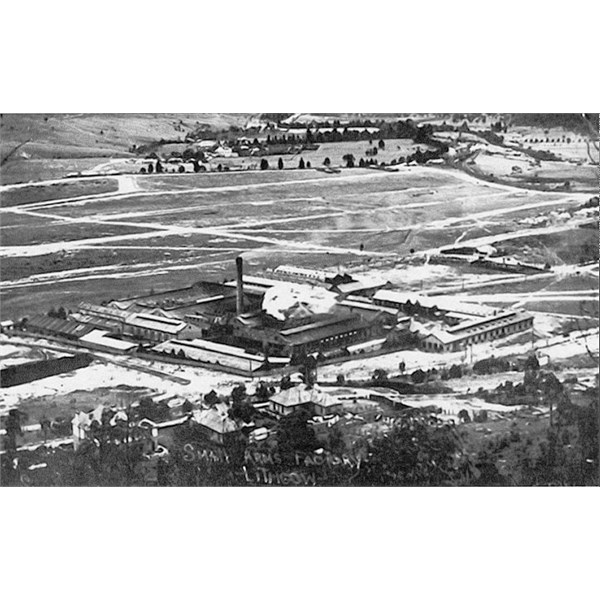
An undated photograph of the Lithgow Small Arms Factory
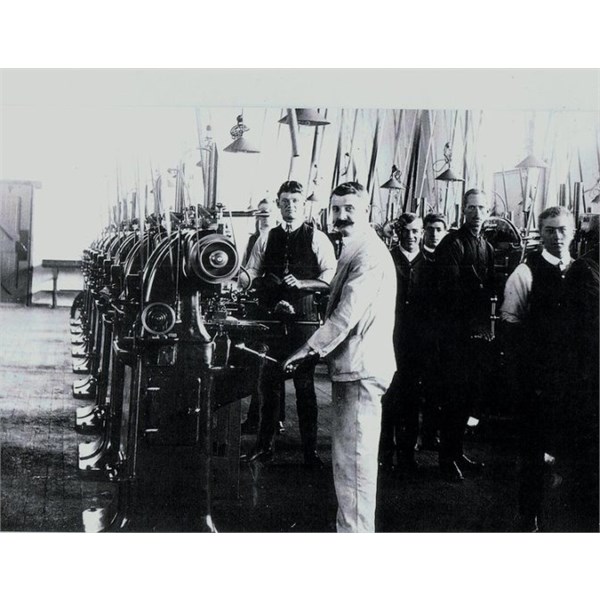
fitters & turners & supervisors preparing the laithes for production on the 303 rifles.
The Department had chosen the site for the Factory in 1909, and at the same time tenders were sought for plant to manufacture fifteen thousand .303 Lee-Enfield rifles per annum. the factory initially manufactured Short, Magazine, Lee-Enfield Mk III rifles (and bayonets thereof) for the Australian military during World War I. During World War II production expanded to include Vickers machine guns, Bren Guns, and, post-WW2, branched out into sporting goods (including civilian firearms and golf clubs), tools, sewing machines, (from the mid-1950s) the F1 submachine gun, L1A1 Self Loading Rifle, KAL1 General Purpose Infantry Rifle rifle prototype and similar products. The Small Arms Factory at
Lithgow was known to produce their single shot models 1A and 1B as
well as their model 12 repeater under the Slazenger brand during the 1960s.
Six mechanics were selected and sent to the Pratt and Whitney Factory in the USA to undergo training. A Pratt and Whitney engineer, Mr A.C. Wright, was appointed the factory's first manager. Mr F.R. Ratcliffe, a former employee of the Royal Small Arms Factory, Enfield (UK) and of Pratt and Whitney, was appointed Assistant Manager. In 1912 there were 250 employees, and by 1913 the factory had produced the first consignment of .303 Lee-Enfield rifles for the defence forces.
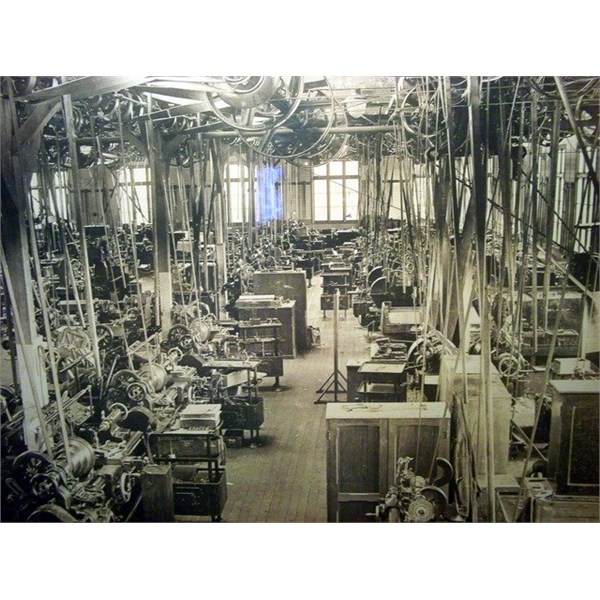
Small Arms Factory Lathes
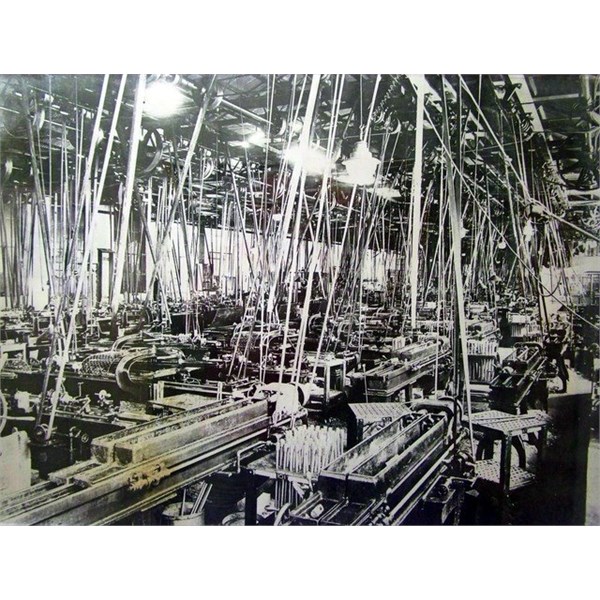
A mass of pulley Belts

Testing Mark I Vickers .303 Land Gun
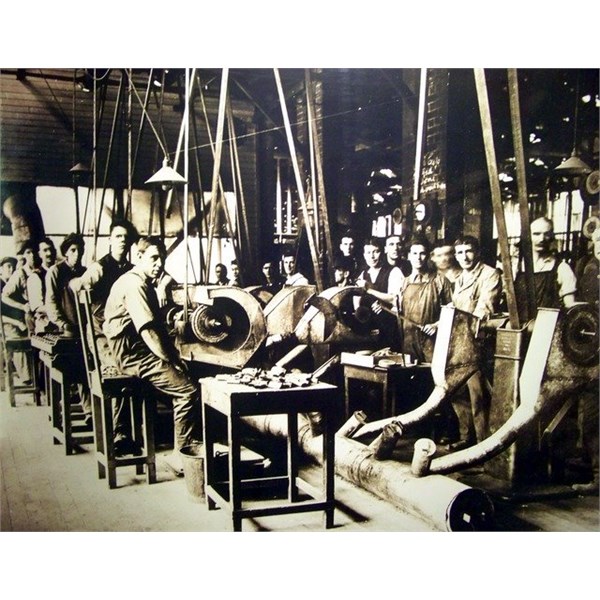
Small Arms Factory workers
During World War I production was increased, new buildings erected and additional machinery acquired from Pratt and Whitney. Employment had increased to 1,300 by 1915/16 when the first apprentices were taken on to train under skilled tradesmen. In the post war period production decreased and there was a consequent retrenchment of employees in 1922. The 1930's saw the staff numbers reduced to 250. For the first time the Factory manufactured commercial products. Manufacture of .303 inch calibre Bren light machine guns commenced on 8 January 1941. A total of 12,000 people were employed by the
Lithgow factory and other newly established Small Arms Factories during World War II.
Peak production of small arms amounted to 4,000 rifles, 150 Bren guns and 70 Vickers machine guns per week. Bren and Vickers gun production ceased at the close of the war. Production of the .303 Lee-Enfield rifle continued until 1956. By 1959 the factory had been reorganised with new buildings and large-scale manufacture of the 7.62mm L1A1 rifle commenced. Production of other military weapons, components and ammunition, as
well as firearms for the civilian market, was undertaken.
As of 23 April 1958 the Factory came under the control of the Department of Supply. By 1959 Lee-Enfield rifle production had ceased and large scale production of the 7.62 mm L1A1 rifle for the defence forces had commenced, as
well as expanded production in other areas. A medal was issued in 1962 to celebrate the 50th anniversary of the
Lithgow Small Arms Factory
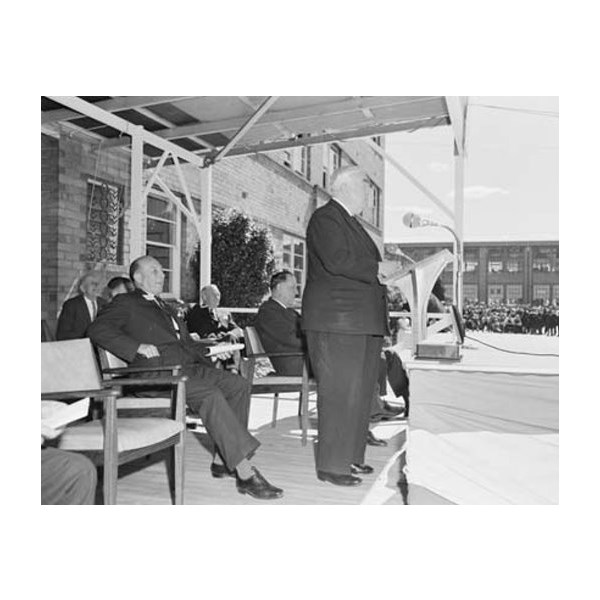
R G Menzies speaking at the opening of the Commonwealth Small rms Factory's 50th anniversary Celebrations in Lithgow, November 1962
The
Lithgow Small Arms Factory Museum displays numerous non-military items manufactured during the near 80 years of precision engineering, including sewing machines, sheep shearing apparatus, hand cuffs and many other commercial items.
The second largest small arms factory in NSW after the
Lithgow factory. Now an Electrolux Factory (formerly Email factory).
The plant covered 29 acres with 19 buildings. Many of the original buildings remain on the site.
The
Orange Small Arms Factory had been built hastily between June 1941 and March 1942 to manufacture .303 rifles and bayonets. The buildings were constructed at a cost of £300,000.
Construction of the main factory building commenced on 4 August 1941 and by 17 March 1942 the first consignment of manufacturing equipment arrived from the
Lithgow factory, manufacture of the first .303 rifles commencing the same day. By the end of 1942 1000 workers were employed at the factory and this rose to 2356 at peak production in 1943. By 1945 numbers of staff were down to 763.
Orange became the main rifle factory to allow
Lithgow to concentrate on Vickers and Bren guns. The Forbes and
Wellington factories supplied the
Orange factory with components and the
Lithgow factory supplied
Orange with timber rifle butts.
.